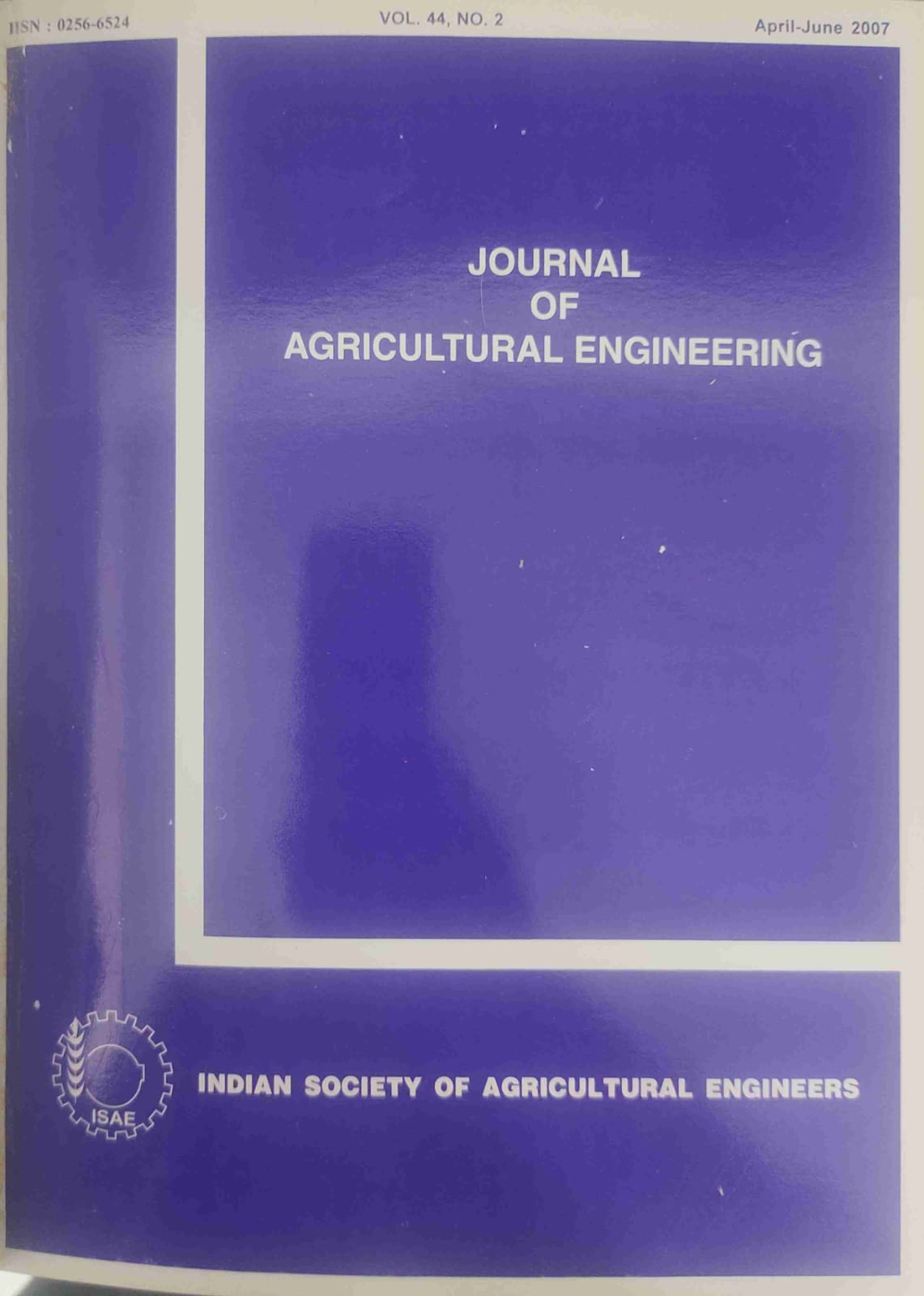Microtube Irrigation For Banana Cultivation in South Bihar: Participatory Assessement and Refinement
DOI:
https://doi.org/10.52151/jae2007442.1267Abstract
To evaluate the efficacy of drip irrigation to improve production and quality of horticultural crops in humid region of eastern India, a participatory study was carried out at four locations in Patna district (Bihar, India) with banana as target crop. Initially, the system was laid out as per conventional design having TABE (take apart button emitter) with 12mm lateral which gave 7.2 I/h discharge with coefficient of variation of 54%. The system was refined to improve its performance and reduce the cost as per need and perception of the farmers. Farmers expressed one TABE per plant insufficient and hence, TABE were replaced with newly designed star microtube emitters, which delivered water at four points in a circle of 25 cm diameter around a plant. A decreasing trend in the discharge along lateral was observed which was rectified by replacing the lateral with 16mm lateral. The system had better performance with less discharge variations and cheap as compared to conventional system. The system was tested with two varieties of banana: Alpan and dwarf Cavendish. Farmers were satisfied with the refinements and realized advantages of drip irrigation in early shooting and bunch emergence, better finger size and bunch size, and better returns. Considering annualised cost of the drip system and benefits due to improved production only, the B-C ratio was 1.0 I to 1.87 for var. Alpan and 1.61 to 1.75 for var. dwarf Cavendish.
References
Behra B P; Sahoo N. 1998. Economic evaluation of drip irrigation systems in Orissa. Environ. EcoI., 16(2), 297-299.
Bhatnagar P R; Srivastava R C. 2003. Gravity-fed drip irrigation system for hilly terraces of the northwest Himalayas. Irrigation Sci., 21, 151-157.
Desale P G; Pawar P P; Pat H R P 2003. Economic analysis of drip irrigation for banana. Indian J. Agri. Economics, 58(3), 506
Goenaga R; Irizarry H. 1998. Yield of banana grown with supplemental drip-irrigation on an ultisol. Experimental Agriculture, 34, 439-448.
Lopaz J R; Abreu J M H 1985. Localised banana irrigation systems evaluation in the Canary Islands. In: Drip / Trickle Irrigation in ACJ:ion. Proc third International Drip/Trickle Irrigation Congress. Fresno, California, USA (18-21 November, 1985), 281-287.
Polak P; Nanes B; Adhikari D 1997. A low cost drip irrigation system for small farmers in developing countries. J. Am. Water Resour. Assoc, 33, 119-124.
Postel S; Polak P; Gonzales F; Keller J 200 I. Drip irrigation for small farmers, a new initiative to alleviate hunger and poverty. Water International, 26(I), 3-13.
Tiwari K N; Reddy, KY. 1997. Economic analysis of trickle irrigation system considering geometry. Agricultural Water Management.














